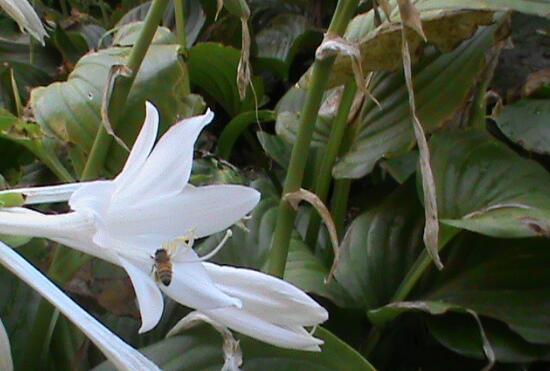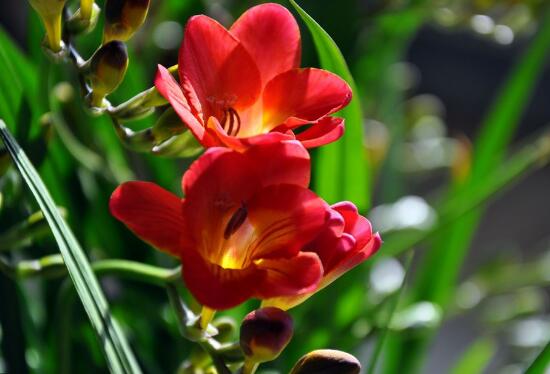In the prevention and control of diseases and insect pests of sorrel, 5 major pest control skills / prevention is the key
Sorrel is a relatively easy plant to raise, but if it is often placed in a relatively extreme environment, or if the cultivation method of sorrel is not very scientific, it will lead to the emergence of sorrel mites, peach aphids and other pests on the plant, so when planting, flower friends should know some pest control methods of sorrel, so as to prevent sorrel from being disturbed by pests.
Control of diseases and insect pests of sorrel
1. Sorrel rock mite

In addition to harming sorrel, it may attack June snow, magnolia and other plants, mainly by piercing plant tissue to absorb juice, and then leave yellow and white dots on the surface of sorrel leaves, causing the leaves to turn yellow and wither.
Prevention and control methods: generally occur in early summer and mid-autumn, the control method is to spray drugs, such as 50% monocrotophos EC, 40% dimethoate EC 1500 times, etc., common acaricides are ineffective against this pest, and it is best to use a variety of agents to spray alternately.
2. Peach aphid
A pest belonging to the family aphidae, which not only does great harm but also has a large number of reproduction. It absorbs the juice from the leaves of Oxalis and secretes honeydew, so that Oxalis may be infected with coal fouling disease. It is very terrible in the pest control of Oxalis.
Prevention and control methods: when planting, pay attention to remove the weeds in the soil to avoid excessive air humidity. When there are pests, you need to spray drugs, generally use 1500 times 80% dichlorvos EC, or spray 1500 times 50% malathion EC, and so on.
3. Root rot
The root of sorrel is the main harm of root rot, it will lead to the lack of fertilizer and chlorosis of leaves, and the fibrous roots will be less, and the plants will wilt and lose energy when there is enough light during the day. in the end, it will cause sorrel to die due to lack of water.
Prevention and control methods: excessive fertilization and watering must be avoided, do not let the flowerpot stagnant water, and the concentration of fertilizer is not necessarily too high, disinfect the soil with fungicides before planting. 50% carbendazim can be sprayed 500 times after the onset of the disease.
4. Leaf spot
When the plant of sorrel is too dense and the light transmittance is relatively poor, it will easily cause leaf spot disease, which will not only make the leaves appear water-stained spots, but also produce a black powder-like mildew layer, which in serious cases will make the leaves dry and curl.
Prevention and treatment: if sorrel grows fast and many branches and leaves cross, you should pay attention to timely pruning, improve its light transmittance and keep the humidity not too high. At the same time, the plants were sprayed with drugs, such as 50% carbendazim 1000 times, 70% methyl topiramate, and so on.
5. Grey mold
It will not only harm the roots of sorrel, but may also harm its leaves. Brown patches appear on the leaves, and the roots rot, and the base fertilizer of the disease spots will produce a gray mildew layer, resulting in the death of the whole plant.
Prevention and control measures: reduce watering times and water quantity, usually avoid soil being too moist, increase the ventilation of the environment, reduce the humidity to less than 80%, and then carry out drug control to the diseased plants. 50% carbendazim 800 times solution and 50% carbendazim 500-800 times solution can be used for control.
Control methods of diseases and insect pests of safflower sorrel
Safflower sorrel steppe is produced in Brazil, which likes warmth, moisture and sufficient sunshine, has high drought resistance and strong adaptability to soil, so it is suitable to be planted in fertile, moist and well-drained soil; it has few diseases and insect pests, simple management and easy reproduction; it is more tolerant to shade, fear of heat and cold, and can survive the winter on land with a little cold protection in North China.
The flowers of Oxalis safflower are sensitive to light, open in the sun, close in the evening or rainy days, and the flowering period lasts for more than 5 months. The leaves are very dense and the coverage is high, so it is difficult for weeds to grow on the ground.
Due to the long flowering period of safflower sorrel, a large amount of fertilizer and water is needed during the growth period. 15 to 20 kg of compound fertilizer per mu should be applied before turning green in spring, which can be applied in holes or according to soil moisture combined with watering. Fertilizer and water should be applied and watered in time during the growing season. Except for the dormant period, applying manure or cake fertilizer and water 1-2 times a month can ensure the leafy and flowering multiplication. In the period of high temperature in the midsummer of July and August, Elaeagnus angustifolia is sometimes forced to dormancy, the flowers and leaves turn yellow and the flowering decreases. If we can pay attention to shading and cooling, we can basically avoid its obvious dormancy and keep the flowers blooming continuously. In the meantime, some of the yellow leaves should be removed in time so as not to hinder the viewing.
Carthamus tinctorius is most easily harmed by red spiders, which mostly occurs in the high temperature and dry season from June to August every year. As long as there are yellow and white dense dots on the leaves, it is likely to be caused by red spiders. 1500 times omethoate or 1500 times triclofenac EC can be sprayed for 2 to 3 times, and the effect is better.
Control of diseases and insect pests of Carthamus tinctorius
Safflower sorrel steppe is produced in Brazil, which likes warmth, moisture and sufficient sunshine, has high drought resistance and strong adaptability to soil, so it is suitable to be planted in fertile, moist and well-drained soil; it has few diseases and insect pests, simple management and easy reproduction; it is more tolerant to shade, fear of heat and cold, and can survive the winter on land with a little cold protection in North China. The flowers of Oxalis safflower are sensitive to light, open in the sun, close in the evening or rainy days, and the flowering period lasts for more than 5 months. The leaves are very dense and the coverage is high, so it is difficult for weeds to grow on the ground.
Due to the long flowering period of safflower sorrel, a large amount of fertilizer and water is needed during the growth period. 15 to 20 kg of compound fertilizer per mu should be applied before turning green in spring, which can be applied in holes or according to soil moisture combined with watering. Fertilizer and water should be applied and watered in time during the growing season. Except for the dormant period, applying manure or cake fertilizer and water 1-2 times a month can ensure the leafy and flowering multiplication. In the period of high temperature in the midsummer of July and August, Elaeagnus angustifolia is sometimes forced to dormancy, the flowers and leaves turn yellow and the flowering decreases. If we can pay attention to shading and cooling, we can basically avoid its obvious dormancy and keep the flowers blooming continuously. In the meantime, some of the yellow leaves should be removed in time so as not to hinder the viewing. Carthamus tinctorius is most easily harmed by red spiders, which mostly occurs in the high temperature and dry season from June to August every year. As long as there are yellow and white dense dots on the leaves, it is likely to be caused by red spiders. 1500 times omethoate or 1500 times triclofenac EC can be sprayed for 2 to 3 times, and the effect is better.
- Prev

What should we do if the late fragrant jade grows insects? disease and pest control of late fragrant jade / 4 insects and 2 diseases are sprayed with medicine
Evening fragrant jade, as the name of the flower, it blossoms at night, the flower is full of fragrance, is a very beautiful flower, raised by many flower friends at home. However, in the process of breeding, due to various reasons, the evening fragrant jade will inevitably be attacked by diseases and insect pests, so what about the night fragrant jade worms? The following are the pest control of 6 kinds of late fragrant jade.
- Next

Xiangxue orchid worms how to do, Xiangxue orchid pest control / 1 insect 3 diseases spray
As a common indoor potted plant, fragrant snow orchid is highly effective. It is not only beautiful, but also can extract essence, which is deeply loved by flower friends. However, in the process of breeding, because of improper maintenance, fragrant snow orchid will cause damage to diseases and insect pests, thus affecting the ornamental. So, what should we do if Xiangxuelan has a worm?
Related
- Fuxing push coffee new agricultural production and marketing class: lack of small-scale processing plants
- Jujube rice field leisure farm deep ploughing Yilan for five years to create a space for organic food and play
- Nongyu Farm-A trial of organic papaya for brave women with advanced technology
- Four points for attention in the prevention and control of diseases and insect pests of edible fungi
- How to add nutrient solution to Edible Fungi
- Is there any good way to control edible fungus mites?
- Open Inoculation Technology of Edible Fungi
- Is there any clever way to use fertilizer for edible fungus in winter?
- What agents are used to kill the pathogens of edible fungi in the mushroom shed?
- Rapid drying of Edible Fungi

